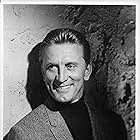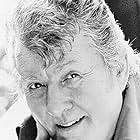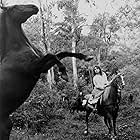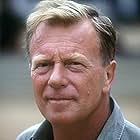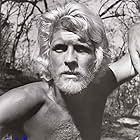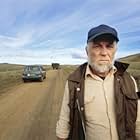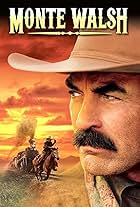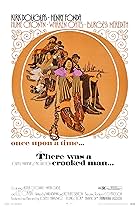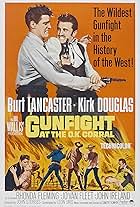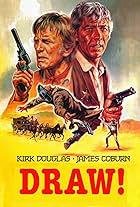In 1880s Australia, after young Jim Craig's father dies, he takes a job at the Harrison cattle ranch, where he is forced to become a man.In 1880s Australia, after young Jim Craig's father dies, he takes a job at the Harrison cattle ranch, where he is forced to become a man.In 1880s Australia, after young Jim Craig's father dies, he takes a job at the Harrison cattle ranch, where he is forced to become a man.
- Awards
- 2 wins & 3 nominations
- Director
- Writers
- All cast & crew
- Production, box office & more at IMDbPro
Storyline
Did you know
- TriviaTom Burlinson had never ridden horses much before making this movie and when he took Denny over the cliff to go after the brumbies that was a one-take shot at full gallop down the cliff face.
- GoofsAt the end of the film when the brumbies are being driven toward a holding corral, the mare Bess and the colt are way out in front. They're domesticated, and they'd know that the ranch meant food and water, so they'd be more eager to return than the others.
- Crazy creditsA herd of wild horses stampede over the hills after the end credits.
- Alternate versionsNBC edited 8 minutes from this film for its 1987 network television premiere.
- ConnectionsEdited into Terror Nullius (2018)
Featured review
We often think of the Western as being a characteristically American film genre, although there have been occasional attempts to adapt its conventions to stories set in other parts of the world. "North-West Frontier", for example, is a British film set in British-ruled India, but the plot is essentially that of "Stagecoach". "Untamed" transfers the standard waggon-train plot from the American prairies to the South African veldt, and "The Sundowners", about Australian pioneer life, has similarities to many films set in the Old West. These two latter films, despite their ostensible setting, had an American leading man, Tyrone Power in "Untamed" and Robert Mitchum in "The Sundowners".
"The Man from Snowy River" is another Australian film with a plot which could be that of a Western. (One could call it a "Southern"). It also features a major American star, in this case Kirk Douglas, in a leading role. Or perhaps I should say that it features Kirk Douglas in two leading roles, the brothers Harrison, a wealthy cattle farmer, and Spur, a prospector. The action takes place in Victoria during the 1880s. Apart from the two brothers, the main character is Jim Craig, the "Man from Snowy River" himself. Jim is a young man orphaned by the death of his father in an accident, who goes to work on Harrison's station. The three main strands of the plot concern the relationship between the two brothers, who have been estranged for many years, the growing romance between Jim and Harrison's daughter Jessica, and the efforts to recapture a valuable stallion belonging to Harrison, which has escaped and is running with a herd of wild horses.
There are a number of differences in terminology; the wild horses are referred to as "brumbies" rather than "mustangs", Harrison's landholding is described as a "station" rather than a "ranch" and the reward for the recapture of the stallion is expressed in pounds rather than dollars. With those and a few other exceptions, however, the above synopsis could easily be that of a typical Western. And yet in some ways this is a very Australian film. The title and the story of the hunt for the escaped stallion derive from a narrative poem by the "bush poet" Banjo Paterson, although the other two strands of the plot are the inventions of the scriptwriters. Paterson himself appears as a character, as does Clancy of the Overflow, the hero of another of his poems. Paterson is something of a national icon in Australia, largely because his poetry helped to create the legend of the "Australian bushman", the tough, individualistic inhabitant of the Outback who plays a role in the Australian national imagination similar to that played by the cowboy in the American one. Clancy himself- a real individual, not a fictitious character- has come to be seen as the archetypal bushman.
"The Man from Snowy River" was made in 1982 during a decade when very few traditional Westerns were being made in America itself. (Perhaps the attraction of the film for Douglas was that it gave him a chance to star in one last "Western"). This was, however, a period when the Australian "New Wave" was starting to give that country its own cinematic identity with films about Australian history like "Picnic at Hanging Rock" and "Breaker Morant". This film, therefore, can be seen, not as an attempt to imitate Hollywood, but rather as an attempt to celebrate Australia's own history and culture in the way that the Western celebrated American history and culture. That other great celebration of the bushman, "Crocodile Dundee", a comedy with a contemporary setting, was to come shortly afterwards.
There are no really great acting performances, although Douglas copes well with the challenge of playing two very different characters, the autocratic, patrician Harrison and the more free-spirited Spur, even if his accent does not always hold up. The film is shot against some attractive mountain scenery, and the action sequences, especially the hunt for the missing stallion, are well done. This is a film which will appeal to anyone with an interest in Australia's past, as well to all horse-lovers. 7/10
"The Man from Snowy River" is another Australian film with a plot which could be that of a Western. (One could call it a "Southern"). It also features a major American star, in this case Kirk Douglas, in a leading role. Or perhaps I should say that it features Kirk Douglas in two leading roles, the brothers Harrison, a wealthy cattle farmer, and Spur, a prospector. The action takes place in Victoria during the 1880s. Apart from the two brothers, the main character is Jim Craig, the "Man from Snowy River" himself. Jim is a young man orphaned by the death of his father in an accident, who goes to work on Harrison's station. The three main strands of the plot concern the relationship between the two brothers, who have been estranged for many years, the growing romance between Jim and Harrison's daughter Jessica, and the efforts to recapture a valuable stallion belonging to Harrison, which has escaped and is running with a herd of wild horses.
There are a number of differences in terminology; the wild horses are referred to as "brumbies" rather than "mustangs", Harrison's landholding is described as a "station" rather than a "ranch" and the reward for the recapture of the stallion is expressed in pounds rather than dollars. With those and a few other exceptions, however, the above synopsis could easily be that of a typical Western. And yet in some ways this is a very Australian film. The title and the story of the hunt for the escaped stallion derive from a narrative poem by the "bush poet" Banjo Paterson, although the other two strands of the plot are the inventions of the scriptwriters. Paterson himself appears as a character, as does Clancy of the Overflow, the hero of another of his poems. Paterson is something of a national icon in Australia, largely because his poetry helped to create the legend of the "Australian bushman", the tough, individualistic inhabitant of the Outback who plays a role in the Australian national imagination similar to that played by the cowboy in the American one. Clancy himself- a real individual, not a fictitious character- has come to be seen as the archetypal bushman.
"The Man from Snowy River" was made in 1982 during a decade when very few traditional Westerns were being made in America itself. (Perhaps the attraction of the film for Douglas was that it gave him a chance to star in one last "Western"). This was, however, a period when the Australian "New Wave" was starting to give that country its own cinematic identity with films about Australian history like "Picnic at Hanging Rock" and "Breaker Morant". This film, therefore, can be seen, not as an attempt to imitate Hollywood, but rather as an attempt to celebrate Australia's own history and culture in the way that the Western celebrated American history and culture. That other great celebration of the bushman, "Crocodile Dundee", a comedy with a contemporary setting, was to come shortly afterwards.
There are no really great acting performances, although Douglas copes well with the challenge of playing two very different characters, the autocratic, patrician Harrison and the more free-spirited Spur, even if his accent does not always hold up. The film is shot against some attractive mountain scenery, and the action sequences, especially the hunt for the missing stallion, are well done. This is a film which will appeal to anyone with an interest in Australia's past, as well to all horse-lovers. 7/10
- JamesHitchcock
- Jan 30, 2013
- Permalink
Details
Box office
- Budget
- $3,500,000 (estimated)
- Gross US & Canada
- $20,659,423
- Opening weekend US & Canada
- $694,126
- Nov 7, 1982
- Gross worldwide
- $20,708,426
- Runtime1 hour 42 minutes
- Sound mix
- Aspect ratio
- 2.35 : 1
Contribute to this page
Suggest an edit or add missing content

Top Gap
By what name was The Man from Snowy River (1982) officially released in India in English?
Answer







